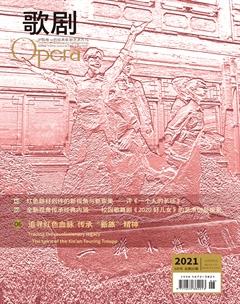女设计师茱莉亚·诺兰-美霞的舞台打破多面围墙
司马勤
过去数年以来,舞美设计师兼制作人茱莉亚·诺兰-美霞(Julia Noulin-Mérat)一直是歌剧界“快速行动,打破常规”新媒体座右铭的表率——可是去年因为疫情影响,什么都被破坏得一塌糊涂。她的沉浸式项目以及特定场所的制作往往模糊了现场表演和装置艺术之间的界限。如今,她的任务就是重新拼砌起散在地上的瓦砾,而某些重组后的成品与原装的版本相比,样貌可能变得似是而非。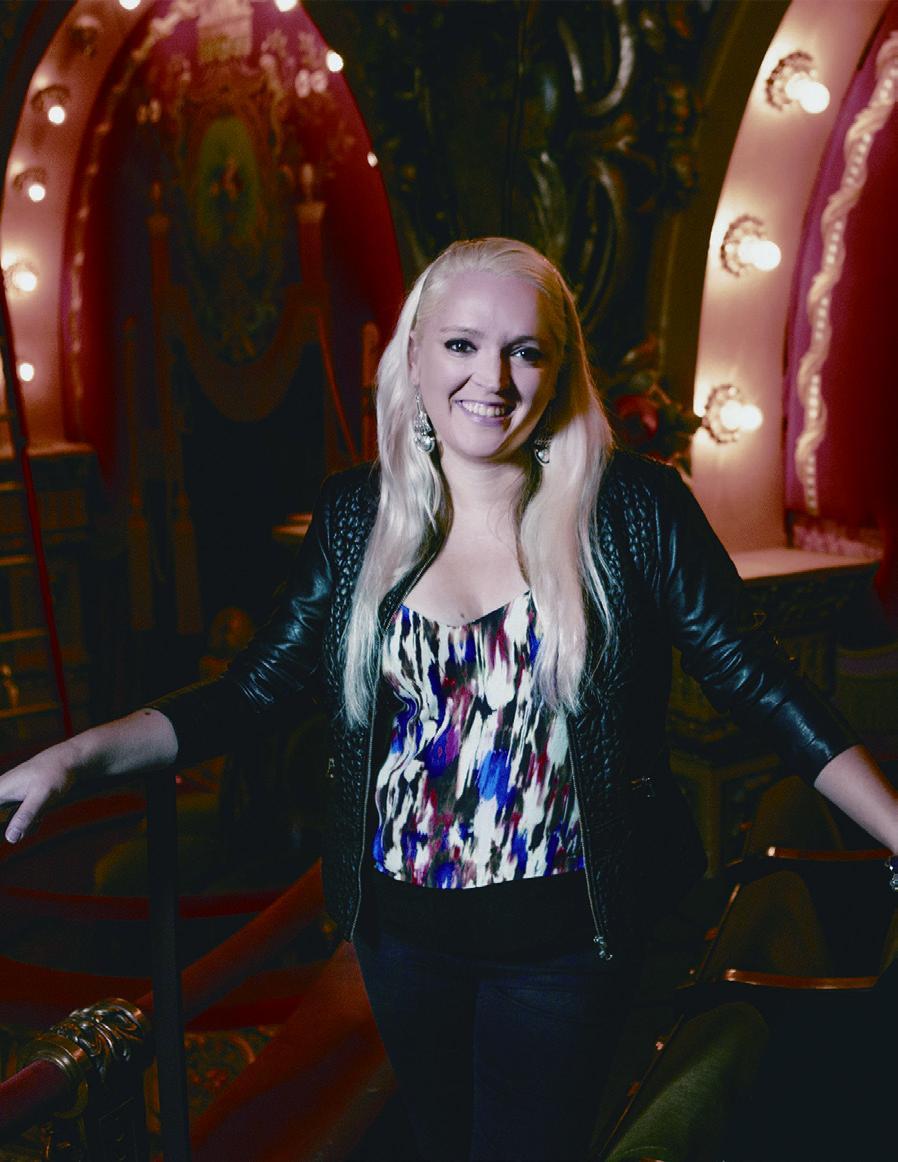
自立门户创办诺兰-美霞工作室之后,她参与设计了400多部电影和电视作品,还有歌劇(25部首演制作)与话剧(22部新作品),其中包括由环球百老汇推出的、在中国巡演的沉浸式亲子剧《彼得潘的冒险岛》(Peter Pans Neverland)。这位在加拿大出生、欧洲长大、长居波士顿的制作人,在疫情迫使整个世界都停摆时,却大步向前,迈向全球。
去年秋天,诺兰-美霞为亚特兰大歌剧院设计了适合户外“马戏团帐篷”(circus tent)演出的防疫透明箱子。不久之后,她开始筹备一部时长90分钟的《波希米亚人》。这部电影在纽约实地取景,演员的年龄与剧中角色相仿,他们来自不同的族裔。该项目由诺兰-美霞主导,香港艺团与几家美国区域性歌剧院共同参与。拍摄以及后期工作的效率很高,在五个月之内就完成了。今年5月底,波士顿抒情歌剧院的视频网站(operabox.tv)推出该版《波希米亚人》供全球网民点播。
《波希米亚人》项目进行期间,诺兰-美霞被聘任为哥伦布歌剧院的总监及首席执行官,尽管当时歌剧院不能进驻剧场演出(所有剧场都因为疫情关了门)。今年4月底,歌剧院终于用一部时长90分钟的“解构”了的《唐乔瓦尼》,为姗姗来迟的2020演出季拉开帷幕,演出地点是该市的科学工业博物馆。几周后搬演的《波希米亚人》同样历时90分钟,在一个改装为艺术家工作室与画廊的老仓库里举行。与此同时,诺兰-美霞是香港无限音乐剧场(More Than Musical)(《波希米亚人》制作伙伴)的创作总监,她为《卡门|香港》设计的布景与服装将于7月底在西九龙文化区艺术公园自由空间亮相。(这也是西九龙地区的第一部西方歌剧制作。)
今年我跟诺兰-美霞的两次相遇(大家更腾出时间坐下来畅谈)都与《波希米亚人》扯上关系:2月份,我特意跑到纽约的唐人街探班;5月份,我们在哥伦布艺术家画廊(即《波希米亚人》的后台)聊天,然后看演出。
尽管新冠疫情令全球停摆,你在过去的一年里事业却发展得如鱼得水。有什么原因?
当疫情期间,大都会歌剧院开始每晚免费播放歌剧视频时,我们都很担心。世界上有其他歌剧院可以跟它相抗衡吗?如果你只提供与“大都会高清”大同小异的视频,可想而知结果会注定失败。可是,大都会的这一举带动并扩大了整个歌剧市场。某些不愿意到大都会歌剧院里看演出的人乐于在家中看免费的《卡门》,因而能更加了解剧中情节。他们开始对歌剧现场演出感兴趣了,更可以接受导演套用完全不同的处理手法。
在香港无限音乐剧场(More Than Musical)《卡门|香港》的舞美设计里,你的构思显然属于“完全不同的处理手法”。可以说说与无限音乐剧场合作电影《波希米亚人》以及制作的初衷吗?
自新冠疫情影响大众的生活,我不断寻找机会,希望可以创作新作品。与此同时,无限音乐剧场创办人长谷川留美子(Rumiko Hasegawa)跟我说,希望她的机构可以进入美国市场。我们深入讨论的其中一个方案,就是制作一部艺术电影。问题是,选择哪类艺术电影?很多歌剧院找来原创音乐然后拍摄数码短片把它放上网,观众相当喜爱这类观赏经验。但是,在过去一年里,有16家美国歌剧院取消了原本计划中的《波希米亚人》演出。这代表着渴望观看常规剧目的一大批受众的需求却被忽略了。
你跟长谷川留美子很快就决定电影的方向吧?
对于这个成立于香港的机构,留美子有着很清晰的见解——首先,必须提携年轻的亚裔演员,或者最起码歌剧中的主要角色应由美国的少数族裔担纲,亚裔演员越多越好。我希望聘请的,是在美国初露头角并能代表全球的艺术家。她再加了一句:“我们的演出模式,时长限于90分钟。”我回答道:“太好了,这也是观众看网上视频的极限。”
你最初从事的就是影视制作。再次涉足影视行业的感觉如何?
刚刚进入职场那一年,我经常跟自己说:“拜托,我想参与歌剧。”我的用词可能不够精准,因为我第一份工作是肥皂剧(soap opera)——美国哥伦比亚广播公司电视台(CBS)的长寿连续剧《指路明灯》(Guiding Light),最终于2009年停播。我的第一轮职业生涯的头4年半就这样贡献给了影视行业。这一次有机会再次参与电影制作,感觉很好。
众所周知,肥皂剧的制作速度惊人。这一方面多多少少也影响到你这一部《波希米亚人》吗?
去年12月我们决定制作这部电影时,我立即找来了导演莱妮·雷特莫(Laine Rettmer)。早在2014年,她领导纽约阁楼歌剧团(LoftOpera)推出过一个风格时髦的当代版《波希米亚人》。过去的几年,她把精力放在影像艺术上。首次排练在1月的第3周举行,2月中旬春节期间开机拍摄。我们的目标是要把纽约的元素渗透在这部歌剧里。
除了大小歌剧院于这段时期都关门以外,电影产业(除了纪录片)同样停滞不前。你是怎样把这一项目组织起来的?
在疫情期间进行拍摄工作很困难。我们经常需要接受核酸检测,大部分时间都得保持社交距离。整个拍摄团队共35人,他们来自美国的东西南北,对于戴口罩的准则都不同。我们原本的计划中安排了两对夫妇扮演剧中两对恋人。可是,一对夫妇因在韩国隔离回不来;而原先答应扮演穆塞塔的演员因为另一家歌剧院的合约条文所限,也无法参加。我们最后请来了常碧洲与向子文担纲咪咪与鲁道夫,他们俩都是旅居美国的中国歌唱家。而穆塞塔一角就由拉里萨·马丁内斯(Larisa Martínez)演出。我本来很犹豫是否要邀请她,但她是2014年莱妮在阁楼歌剧团时执导的《波希米亚人》中的穆塞塔,她也乐意参与我们这个制作。音轨是预先在录音棚录制的,所以演员不需要在拍摄场地开口唱歌,这样大家也可以挨近一点。
“渗透纽约的元素”于电影有什么含意?
我们想要让歌剧与现实生活产生可信的连接。在电影版本的《波希米亚人》中,咪咪染上新冠肺炎,我们还把故事的背景设定在2020年2月,即美国人民还未搞清楚疫情严重性那一刻。根据故事的逻辑,我们应该戴口罩还是不戴口罩?《波希米亚人》让我们探索当时大众面对的疑惑。鲁道夫与咪咪分手的一场是在凌晨3点拍摄的,地点是康尼岛(Coney Island),因为没有任何地方可比这个空空如也的休闲娱乐区在寒气迫人的2月凌晨更冷清、更令人沮丧。我们选中代替莫墨斯咖啡馆的场地位于曼哈顿唐人街。拥有百年历史的南华茶室,在拍摄前几天才重新营业(《蜘蛛侠2》也曾选用了南华茶室作为外景之一)。这样,我们就有借口录下唐人街于疫情期间春节之际的街景。歌剧故事往往都有“姑且信以为真”的材料,我们也加入了点魔幻现实主义(电脑三维动画特效)——纽约是一个充满魔幻的都市,一切皆有可能发生。
但你不是在纽约土生土长的。你的背景如何呢?
我在加拿大蒙特利尔出生,巴黎长大,也曾在布鲁塞尔住过一年。大多数这样搬来搬去的人,他们的父母可能是政府派遣驻国外工作或者是医生之类。我的父母在制药行业工作。我们在法国南部有一套房子,就在阿维尼翁附近,所以我看过很多舞台剧。艺术节就像我的非正式学校。我回到加拿大上大学时,原计划是念医科,却在剧场里当上了实习生。经过一段“冒充者综合征”的日子,我终于决定转系改念舞台设计。后来我到了美国,在波士顿大学拿到两个硕士学位:一个专攻制作设计(production design),另一个则是艺术管理。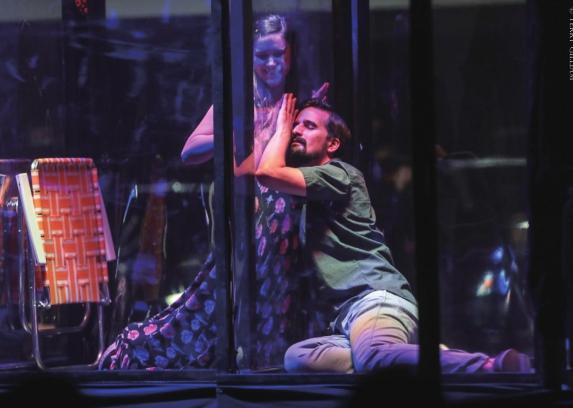
为什么选择歌剧?
它是表演艺术范畴里的视觉艺术。歌剧就如同是艺术行业的奥运会,歌唱家差不多就相当于运动员。歌剧具有的戏剧性强度很不一样,令我神往。事实上,这就是吸引我来到波士顿的原因。有人选学校为了名气,或者为了某一位老师。对我来说,重要的是找一个有实力的歌剧课程的好音乐学校。波士顿大学的歌剧中心非常强大,让我有机会物色到导演与刚起步的歌唱家。
我的同行朋友都以为我毕业后就回到欧洲,但美国近年来的歌剧复兴——新作品的出现以及经典作品的沉浸式制作——更令我振奋不已。毕业后两年,专攻特定场地制作的波士顿抒情歌剧院(Boston Lyric Opera)邀请我跟他们合作。突然间,我为观众创造出一个视角,主导了他们的整个歌剧体验。这也是我后来跟只委约新作品的游击队歌剧团(Guerilla Opera)合作的关键。从宏观角度来看,波士顿抒情歌剧院搬演詹姆斯·麦克米兰(James McMillan)《仁慈》(Clemency)的美国首演(一部把圣经故事改编为当代故事的作品),与亞特兰大歌剧院在一个游乐场的马戏帐篷里演《丑角》,艺术上的距离其实相当接近。
你现在是哥伦布歌剧院总监,跟从前身为制作团队一分子的角色不同了。角色过渡顺利吗?
身为总监的优势,是因为我不只具有院团行政的经验,也不只负责选角。舞美设计的工作很实在很具体。我在业内已经建立声誉,曾与创作新歌剧的同行合作,也在另类的表演场地搬演陈词滥调的歌剧,让观众重新发现经典新篇。当你走进一个大仓库时,你会愿意拥抱新经验,因为你离开了自己的舒适圈。
我告诉你,哥伦布歌剧院的董事局非常支持我。他们大可以说:“因为疫情……我们必须取消演出……明年再见!”在面试过程中,他们了解我对于探索歌剧意义的想法。我说,“坚持传统的观众可以找到他们喜爱的制作,热爱黑盒剧场的观众也可以找到称心的演出。全部制作都会吸引观众——但不一定是同一个观众群。”他们对此感到兴奋,但很多其他的歌剧院就未必那么开明。当我说我希望如期搬演《唐乔瓦尼》与《波希米亚人》时,他们问我:“我们需要筹备什么,让你的计划可以实现?”
在疫情期间上任歌剧院总监感觉如何?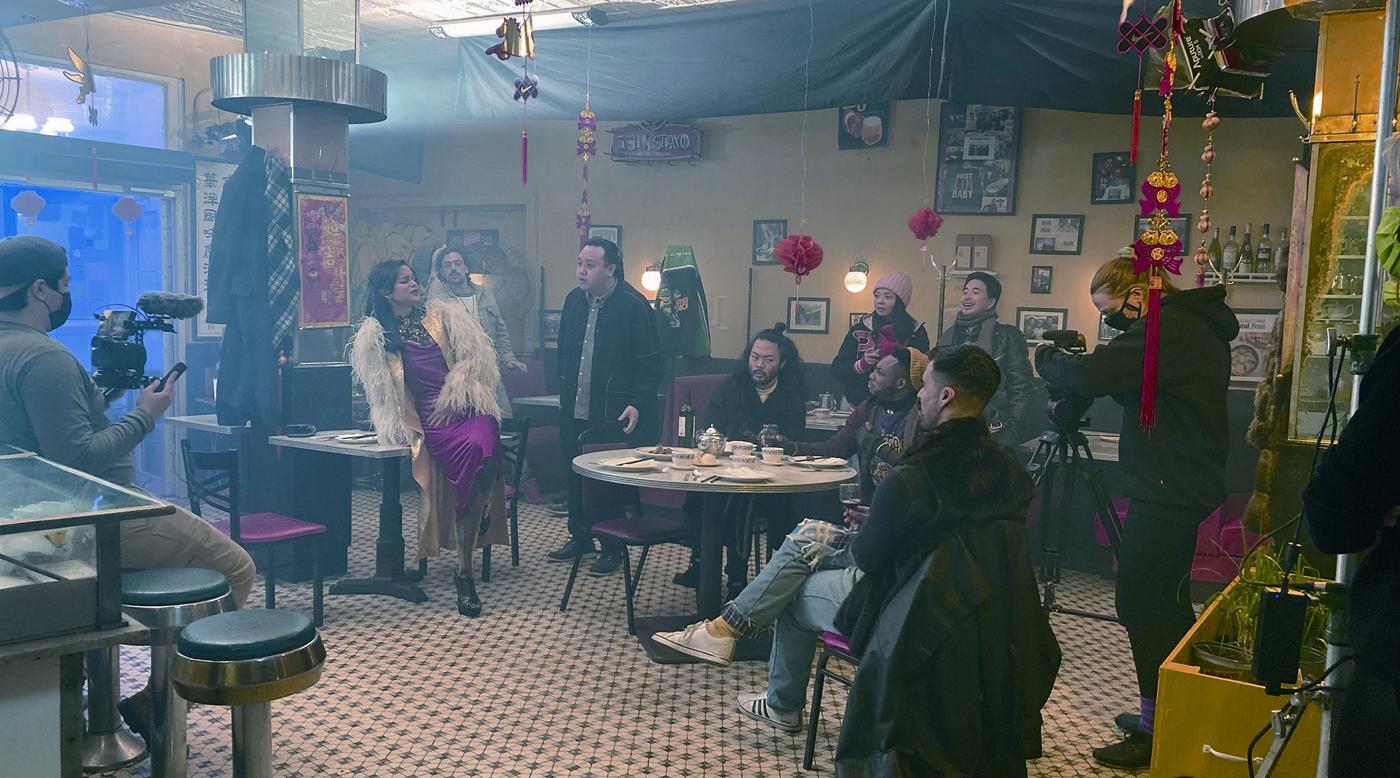
近年来很多探索经典歌剧的新制作,把陈词滥调的作品浓缩至90分钟内,删掉了合唱团,乐队规模也变小了。说实话,很多传统院团接受不了90分钟时长。倘若我在两年前提议“90分钟的经典歌剧版本”,肯定有人会骂我斗胆颠覆传统。正如我的音乐总监提醒我,《唐乔瓦尼》里的精华咏叹调就不止90分钟了。可是因为疫情,没有中场休息的90分钟演出版本却让歌剧团渡过难关。
你的确搬演了90分钟版本的《唐乔瓦尼》!
这完全是对经典作品的重新构思。首先,演出地点是哥伦布科学工业博物馆,场地的面积很大。由伊芙·萨默(Eve Summer)执导的《唐乔瓦尼》一开场就在地狱——为了对抗疫情,我们都被隔离了一年多,大家都有概念,明白什么是地狱——所以,当我们看到演员被隔离就知道舞台代表地狱。随后,就是解释情节的来龙去脉。我早已为了保护歌唱家而设计了大型的透明箱子。在亚特兰大,这些箱子看上去像马戏班用的大篷车,但在哥伦布,它们就像是博物馆里单独的陈列品。
哥伦布观众的反应如何?
他们都很好奇。哥伦布歌剧院感到骄傲,因为吸引了三成的新观众,其中的大部分都是00后。我们不能忽视这些年轻的观众们:他们很快就会成为美国四分之三的劳动主力;他们不喜欢坐在黑暗的剧院里看演出;他们渴望的是参加活动,参与体验。最后,他们得到的是歌剧。
哥伦布的《波希米亚人》同样只有90分钟时长(跟电影版删减的段落大同小异),但用上新的英语唱词。由丹尼斯·怀特黑德·达林(Dennis Whitehead Darling)导演的演出舞台效果相当浓烈,比美莱妮·勒特莫版本的电影质感。
我受聘接手哥伦布歌剧院时,《波希米亚人》的选角只做了一半。因为新冠疫情,我们也无法举行试听会。于是我打了个电话给常碧洲,说,“现在开始学唱英语唱词吧!”(大笑)我们还聘请了杨熠(电影版本中的阿尔钦多罗),还有美籍华裔女高音周华饰演穆塞塔。
演出場地是早年改装为艺术家工作室与画廊的老仓库。这个环境令我联想起歌剧历史的始源:当年的宫廷大厅同样挂着“当代”艺术作品。有当代油画与雕塑在周边,让一切更有动力。每一次听到人家说歌剧属于“老”艺术时,我总觉得啼笑皆非。相比油画与雕塑,歌剧还很年轻。可惜我们往往都忘却这一点。我们把歌剧摆进一个盒子,然后说:“歌剧在这个时空活着,它属于博物馆陈列品。”
哥伦布歌剧院未来有什么计划?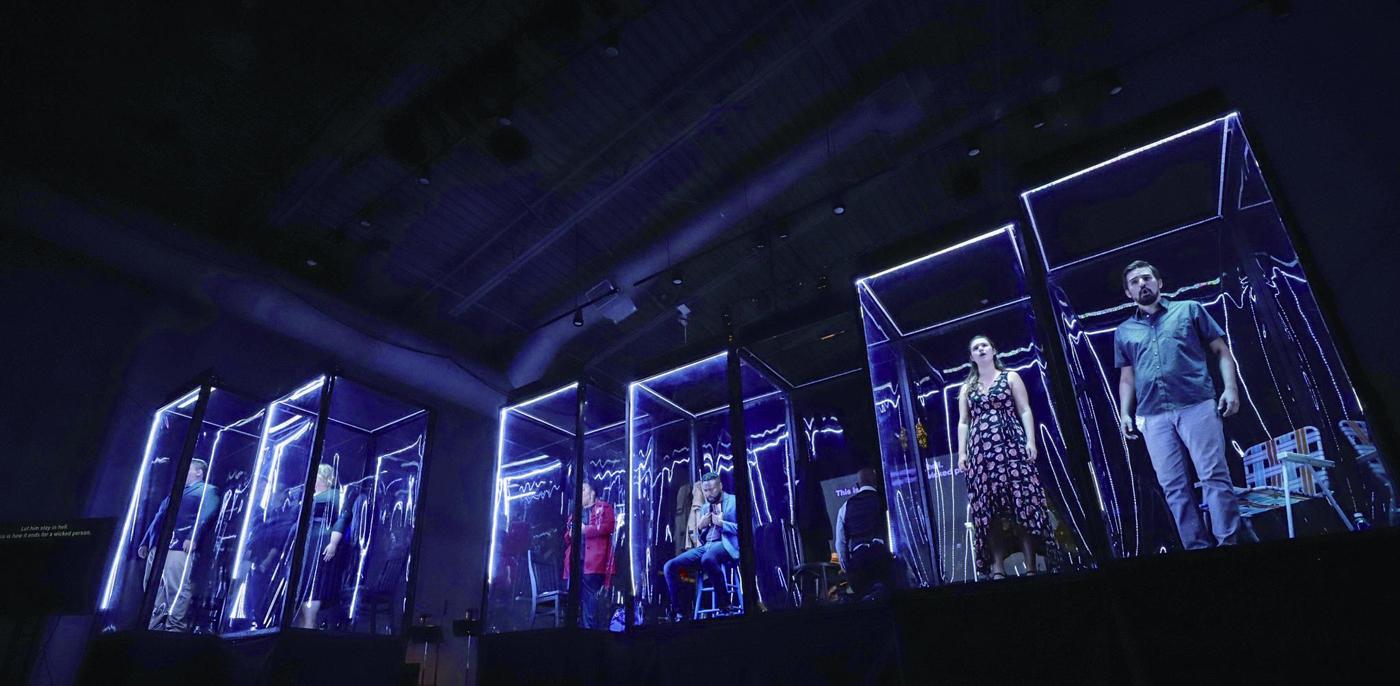
明年是哥伦布歌剧院成立40周年。今年12月,我们会推出《托斯卡》新制作,这个剧目是歌剧院40年前成立时的首部制作。明年2月我们将搬演2016年创作的《旅行伙伴》(Fellow Travelers)。直至整个5月,我们将举办“歌剧40天”,在哥伦布市内多个地点举行不同活动,压轴制作沉浸式的《茶花女》。观众将有机会跟踪4位维奥莱塔在闹市区酒店的不同空间里穿梭。
你的舞台与电影作品都会刻意强调无肤色差别选角。什么驱使你这样做?反响又如何?
不同族裔与身份认同的艺术家能有平等机会站在台上,很是重要。虽然这会听起来好像有点离题,但我最喜欢的电视节目之一是《实习医生格蕾》(Greys Anatomy)。编剧珊达·莱梅斯(Shonda Rhimes)最伟大的成就,是把“任何族裔都可以当外科医生”这个理念平常化。《唐乔瓦尼》与《波希米亚人》在哥伦布同期排练的一个晚上,两位指挥拉我到一边认真地说:“你知道你做了什么?在一个与亚洲毫无关系的歌剧里,你聘用了两个亚裔女主角!在这里史无前例!”我说:“好吧,欢迎你来到未来世界。”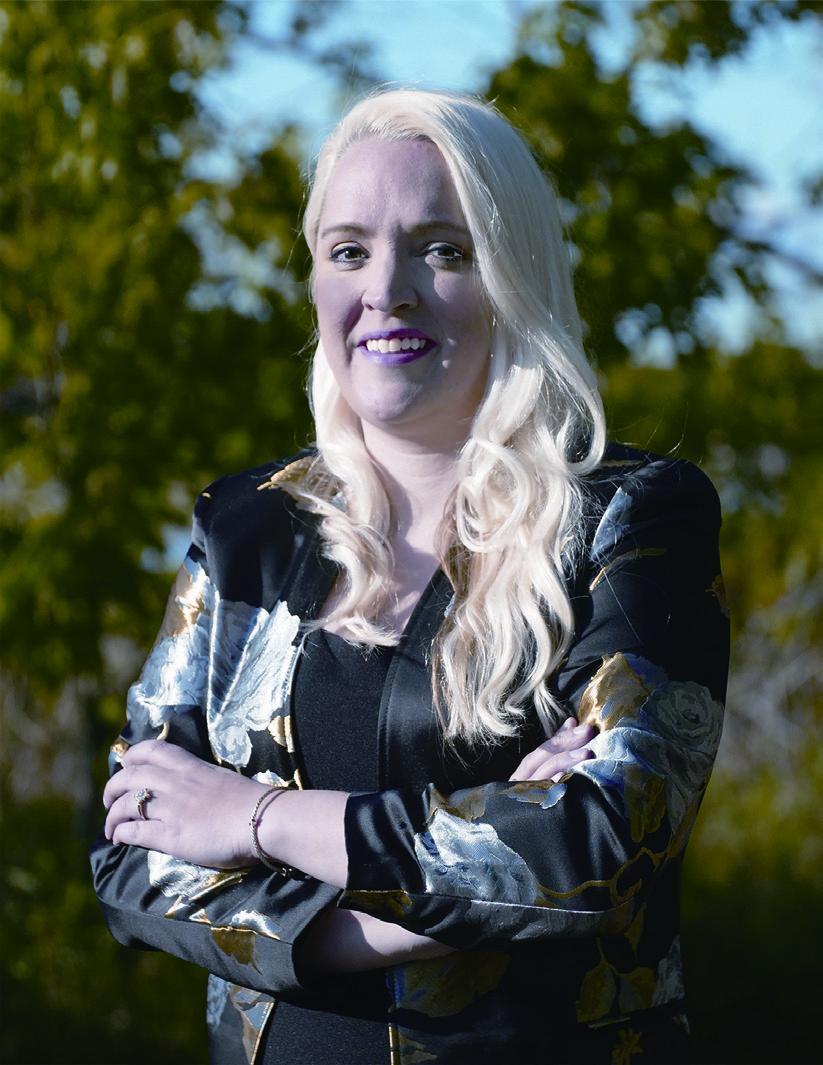
For some time now, the designer and producer Julia Noulin-Mérat has been operas answer to the newmedia motto “Move fast and break things”—except that after a year of pandemic disruption, things were pretty much broken already. For an impresaria of immersion whose site-specific productions often blur the line between live performance and installation, its now a matter of reassembling the rubble, sometimes with only a vague resemblance to the original.
As founder of the Noulin-Mérat Studio, she has designed more than 400 productions for film and television as well as opera (25 premieres) and theatre(22 new plays), including an immersive touring production of Neverland in China for Broadway Asia. But it is as a producer—during the Covid-19 pandemic, when much of the world was shuttered—that the Canadian-born, European-raised, longtime Bostonian went from working steadily in the wings to reaching the global stage.
Fresh from designing Covid-resistant sheaths for Atlanta Operas outdoor “circus tent” productions last fall, Noulin-Mérat found herself producing a 90-minute film of La Bohème—shot on location in New York City with an age-appropriate, multi-ethnic cast—with a Hong Kong partner and a consortium of regional American opera companies. Shot and edited in less than five months, the finished film launched in late May on Boston Lyric Operas digital venue (operabox.tv).
During the Bohème project, Noulin-Mérat was also appointed General Director and CEO of Opera Columbus, which was still locked out of its local theatres. Belatedly, the company opened its 2020 season in late April with a 90-minute deconstruction of Don Giovanni at the citys science museum, followed a few weeks later by, again, a 90-minute Bohème, this time staged in a former warehouse converted into an artist studio and gallery space. Meanwhile, NoulinMérat was appointed Creative Director of More Than Musical (her Hong Kong partner for the Bohème film) where her sets and costumes for a radically updated Carmen will finally make their debut in late July as the first Western opera to appear at the West Kowloon Cultural Districts Freespace.
Both times I managed to see Noulin-Mérat this year (and actually sit down for a relaxed moment) involved productions of Bohème: first, in February on the Chinatown film set in New York City, and second, backstage at the gallery space in Columbus before the opera in late May.
Professionally, youve had a really successful year despite the Covid pandemic. How do you account for that?
When the Metropolitan Opera started streaming its content for free, we were all scared. How can any opera company compete with that? Anyone trying to do the same thing is just setting themselves up to fail. But this actually expanded the entire opera market. People who might not have felt comfortable sitting at the Met found themselves streaming Carmen at home and got to know the story. Many were ready to experience opera live in a completely different way.
Evidently, the Carmen you designed for More Than Musical in Hong Kong will be “a completely different way.” Tell us about the film of La Bohème you did with them and how that came about.
Throughout the pandemic, I was looking for opportunities to create new work, and [More Than Musical founder] Rumiko Hasegawa had been asking how her company could enter the American market. One of the things wed brainstormed was making an art film. The question was, what kind? Many companies had been making short films with original music, and audiences were responding well to the digital experience. But 16 different opera companies in the US had cancelled productions of La Bohème, so there was a hunger out there for the classics, with a whole audience being left behind.
How quickly did you and Rumiko come to terms?
Rumiko had a very clear perspective for a Hong Kong-based company—first, casting young Asian artists, or at least casting principal roles with ethnic minorities, with as many Asians as possible. I was looking for emerging talents in the US that also represent the entire world. Then she said, “Our format is 90 minutes.” I said, “Great, ‘cause thats as much as anyone wants to see online.”
You had an early television and film background. What was it like to return to that world?
When I first started working professionally, I used to say, “Please, let it be in opera.” But I shouldve been more specific, because for four years I worked in soap opera (laughing). I learned a ton working on the final years of Guiding Light for CBS. My first life was nearly four and half years in television and film, and it was really nice to reconnect with that.
Daytime dramas were famous for their breakneck production pace. Did that rub off on your Bohème?
We decided to do the film in the first week in December. I approached director Laine Rettmer, whod done an updated production of La Bohème for LoftOpera back in 2014 but was recently doing a lot of video art. Our first rehearsal was the third week in January, and we started shooting in mid-February around Chinese New Year. Our goal was really to infuse the film with the city of New York.
Not only were opera houses closed during this time, but the film industry (except for documentary films) was also pretty quiet. How did you make this work?
Its not easy, filming during a pandemic. There was frequent testing, and we kept socially distant most of the time. We had a team of 35 artists, flown in from all over the US, with different mask requirements. Our initial idea was to have two couples playing the romantic leads, but one couple was put in quarantine in South Korea and our original Musetta couldnt get released from a prior contract. So we wound up with Chang Bizhou and Xiang Ziwen, two Chinese singers living in the US, as Mimi and Rodolfo, and Larisa Martínez playing Musetta. Id originally been hesitant to contact Larisa, but shed sung the role in Laines stage production and was eager to join. We recorded the singing in advance, so no one was actually singing on the set and we could all work closer together.
What did it mean to “infuse [the film] with the city of New York”?
We wanted to anchor it in our everyday lives. In this production, Mimi is suffering from Covid and we actually set it during February 2020, when we were all just figuring out what the pandemic was. So this justified dramaturgically, do we wear masks? Do we not wear masks? Bohème lends itself to that kind of exploration. We shot Rodolfo and Mimis breakup at Coney Island at 3 a.m. because nothing could be more cold and depressing than Coney Island at three in the morning in February. Our version of Café Momus was the Nom Wah Tea Parlor, a hundred-year-old restaurant in Chinatown, which had just reopened to the public a couple of days before. (Nom Wah had also been used as a film set for Spider-man 2). This all gave us an excuse to document Chinatowns streetlife during Chinese New Year amid the pandemic. In answer to operas suspension of disbelief, we added touches of magical realism (with CGI). New York can be such a magical city that anything seemed possible.
You didnt grow up in New York, though. What about your background.
I was born in Montreal and grew up in Paris, as well as a year in Brussels. When you move around like that, youre either an Army brat or your parents are in the medical field. Mine were in pharmaceuticals. We had a house in the south of France outside Avignon and saw a lot of plays. Festivals were my unofficial school. When it came time for college, I moved back to Canada thinking I would be attending medical school but I wound up in a theatre internship. After some initial“imposter syndrome,” I ended up switching from premed to theatre design. I later moved to the US and wound up with two Masters degrees from Boston University, one in production design, the other in arts administration.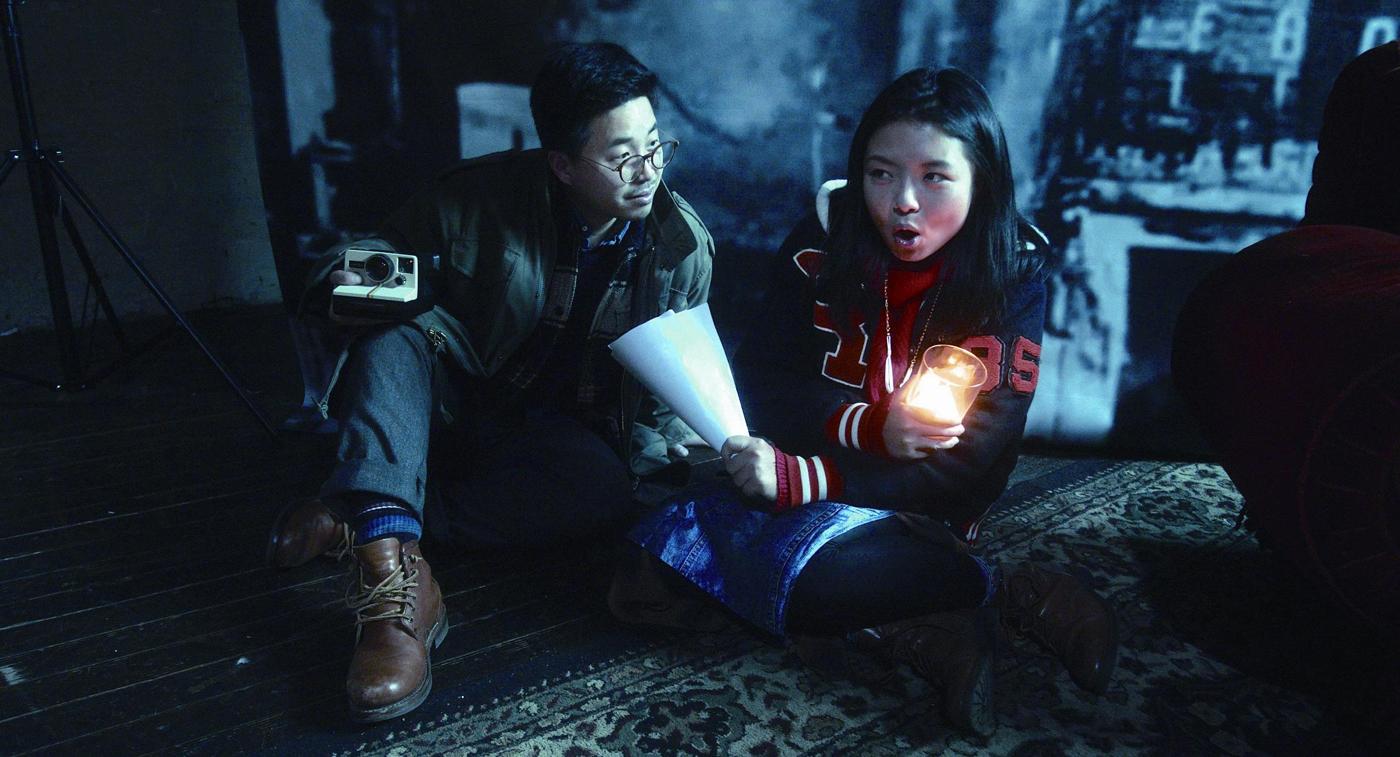
So why opera?
Its a visual art within a performing art. Opera is the Olympics of art forms, and the singers are almost like athletes. The intensity of the drama is different and it really drew me in. Thats what lured me to Boston, actually. Some people choose a school for the name, some follow a teacher. For me, it was important to go to a good music school with a strong opera program. BUs Opera Institute was incredibly strong and proved to be a great way to meet directors and emerging singers.
My colleagues had all expected me to return to Europe after graduation, but I was more excited by the renaissance of opera in the US, from new works to an immersive re-envisioning of the classics. Two years after graduation, I was approached by Boston Lyric Opera, which specialized in site-specific shows. Suddenly I was actually creating a point of view for the audience that could sustain the whole operatic experience. This is also how I also ended up working early on with Guerilla Opera, where they do exclusively new works commissioned for their ensemble. Its not a huge distance from the BLOs US premiere of James McMillans Clemency, a biblical opera on a modern scale, to the Atlanta Opera putting on Pagliacci in a circus tent on a fairground.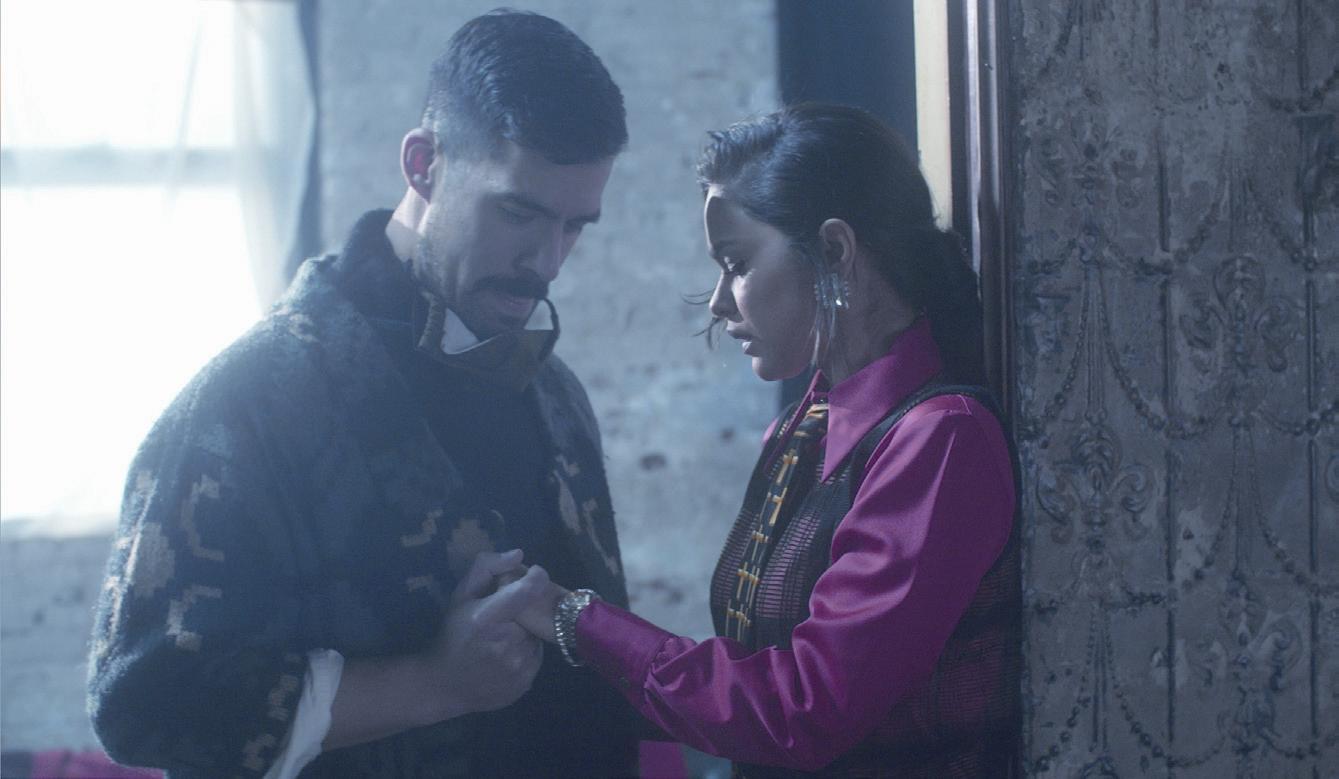
With Opera Columbus youve gone from being part of a producing team to actually running a company. How smooth was that transition?
I think part of my strength as a general director is that I dont just come from the administration side, or the casting side. Set designers are the ones who actually put things on their feet. Id already carved a niche for myself with people who were not only interested in creating new operas but also rediscovering the warhorses in alternative venues. When you see a show in a warehouse youre open to new possibilities, and you have to leave your comfort zone.
I have to say, the Opera Columbus board has been incredibly supportive. They couldve said, “Theres a pandemic…were cancelling both shows…see you next year!” But during the interview process, they understood I meant to explore what opera means. I told them, “Well have shows for traditionalists, and for black-box lovers. Therell be an audience for all our shows – but it wont necessarily be the same audience.” They were excited about that, and I must say not every company wouldve been. When I said I wanted to do both Don Giovanni and La Bohème this season, they asked, “What do we need to put in place for this to happen?”
What was it like being hired in the middle of a pandemic?
Much recent exploration in the classic repertory had involved distilling the warhorses into 90 minutes, without chorus or full orchestra, and frankly, a lot of traditional companies were not ready for 90 minutes. If Id said the words “90-minute warhorse” two years ago, they wouldve said, “How dare you!” As my music director kept telling me, 90 minutes isnt even a “best-of” for Don Giovanni. But during a pandemic, 90-minutes-no-intermission is going to get us through.
Yet you did a 90-minute Giovanni!
It was a total reimagining of the opera. First of all, it was staged at Columbuss science museum, which is a large space. Eve Summers production opened in hell—after being isolated for a year now we all know what hell feels like—so seeing people isolated already means were in hell. We just had to explain how we got there. Id already designed large vinyl boxes to protect the singers. In Atlanta, they looked like a circus wagon, but in Columbus they looked like individual museum exhibits.
How did this go over in Columbus?
They were intrigued. Opera Columbus was proud of the fact that 30 percent of our audience was new, and most of those were millennials, which will soon be about 75 percent of the workforce and an audience we cant afford to ignore. They do not want to sit in the dark for a show. They want an event, an experience. They came for an event; what they got out of it was opera.
You also did La Bohème, again at 90 minutes (with similar musical cuts as the film), but with a new libretto in English and a production by stage director Dennis Whitehead Darling that is as theatrical as Laine Rettners film was cinematic.
When I was hired, we had only half a cast, and I couldnt really hold auditions during the pandemic, so I called Bizhou Chang and said, “Now learn it in English” (laughing). We also hired Yi Yang (the Alcindoro in the film) and another young Chinese woman in the US named Ivy Zhou as Musetta.
We staged the production at an old warehouse converted into artist studios and galleries, which in a way harked back to what opera was in its beginnings, when you were surrounded by modern art. Paintings and sculpture by your contemporaries brings a certain energy into the art form. It always makes me laugh whenever anyone calls opera an “old” art because compared to painting and sculpture, opera is quite young. But we forget about that because weve already put opera in a box and said, “This is where it lives in time, as a museum piece.”
So where will be Opera Columbus be heading in the future?
Next season is our 40th anniversary, which opens in December with a new production of Tosca, the first opera that the company ever performed. In February we have Fellow Travelers, a recent opera from 2016. Then we end with “40 Days of Opera” throughout May, with events around town culminating in an immersive La Traviata, where audiences will be following four different Violettas throughout a downtown hotel.
Both your stage and screen productions embody a fairly aggressive devotion to racially blind casting. What inspired this, and what reactions have you gotten?
Representation matters. This may sound a little offtopic, but one of my favorite television shows was Greys Anatomy. Shonda Rhimes greatest achievement was to normalize that anyone could be a surgeon, anyone could have a role. One night in Columbus when both Giovanni and Bohème were rehearsing, the two conductors took me aside and asked, “Do you realize what youve done? Youve cast two Asian women as leads in a non-Asian-themed opera. Thats never done here.” I said, “Well, welcome to the future.”
——《克里斯托弗·诺兰电影文化研究》评介

